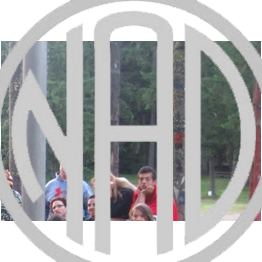Method Donations and Grants Founder Edmund Booth | Website www.nad.org Founded 25 August 1880 | |
 | ||
Focus Deaf issues, promote equal accessibility Area served United States of America Key people Christopher Wagner President, Chief Executive OfficerHoward A. Rosenblum, CEO/Ex Officio Board Member CEO Howard A. Rosenblum (Apr 2011–) Similar World Federation of the Deaf, Gallaudet University, Youth Leadership Camp, American School for the Deaf, Deaf Professional Arts Netw Profiles | ||
The National Association of the Deaf (NAD) was founded in Cincinnati, Ohio in 1880 as a non-profit organization run by Deaf people to advocate for deaf rights. The first president of the organization was Robert P. McGregor of Ohio. It includes associations from all 50 states and Washington, DC. It is also the United States member of the World Federation of the Deaf, which has over 120 national associations of Deaf people as members. The office of the headquarters is in Silver Spring, Maryland. All the presidents of the NAD were late-deafened until the 1970s. The NAD is in charge of the Miss Deaf America Ambassador programs that are held during the associations conventions. The NAD has advocated for deaf rights in all aspects of life from public transportation to education.
Contents
Mission statement
The NAD describes their aims and objectives:
"The mission of the National Association of the Deaf is to promote, protect, and preserve the civil, human and linguistic rights of deaf and hard of hearing individuals in the United States of America."
While the NAD works for deaf people it also works to promote knowledge about the rights, culture, and language of deaf people to hearing people.
Issues
The NAD advocates for any issues that are associated with deaf rights. Starting early on the NAD worked to preserve sign language especially under president George Veditz. During his time as president, Veditz and other members of the NAD used new film technology to capture individuals signing to ensure that their language would never be lost. Although African-Americans were not permitted to be members until later starting in the early 1900s the NAD advocated for vocational training for the "Colored Deaf" population. Because of the lack of rights afforded to people of color in NAD, several Deaf Advocacy focused on people of color were formed, included National Black Deaf Advocates. The NAD has also fought to keep deaf teachers teaching deaf students and for the opening of deaf residential schools across the country. In 1909, President William Howard Taft signed a law allowing deaf individuals to take civil service exams only after the NAD fought to have this as a law. It was a strong advocate for having captioned films and in 1958 President Eisenhower signed a law requiring this. The NAD strongly supported the students and faculty of Gallaudet University in the Deaf President Now protests of the 1980s. The Americans with Disabilities Act (ADA) of 1990 was also strongly fought for by the NAD. Most recently the NAD has advocated for professional sports stadiums to provide captioning for the referees calls and for the announcers comments. The association has worked to require insurance companies to have deaf people as clients and landlords to have deaf tenants. Hotels are now required to provide "deaf-friendly" alarm clocks and smoke detectors because of the NAD's persistence in the matter. The NAD always fights for the right of deaf individuals to be able to use American Sign Language and to be provided an interpreter. The NAD website gives information on all the rights deaf individuals have and how to go about gaining these rights. As technology advances and the world changes, the NAD's issues will change also, but if an issue can be related to deaf rights, the NAD will work to achieve whatever is best for the deaf individual.
Legal Rights for the Deaf Individual
Not only does the NAD advocate for rights of the deaf individual, it makes sure that deaf people know what their rights are when it comes to certain issues. The NAD provides step-by-step details of what is legal and what is not legal when it comes to deaf people's rights in the United States. It is clearly stated on the NAD's website what a deaf person is entitled to as a deaf individual in the United States of America.
Milestones for the NAD
Awards
The biennial NAD conference includes awarding of various awards.
State Associations
State Associations are affiliated with, but are independent of the NAD. All 50 states and Washington, DC have a state association. Many states provide a dual membership with their particular state and the National Association. Some of the state associations do receive their bylaws from the NAD.
